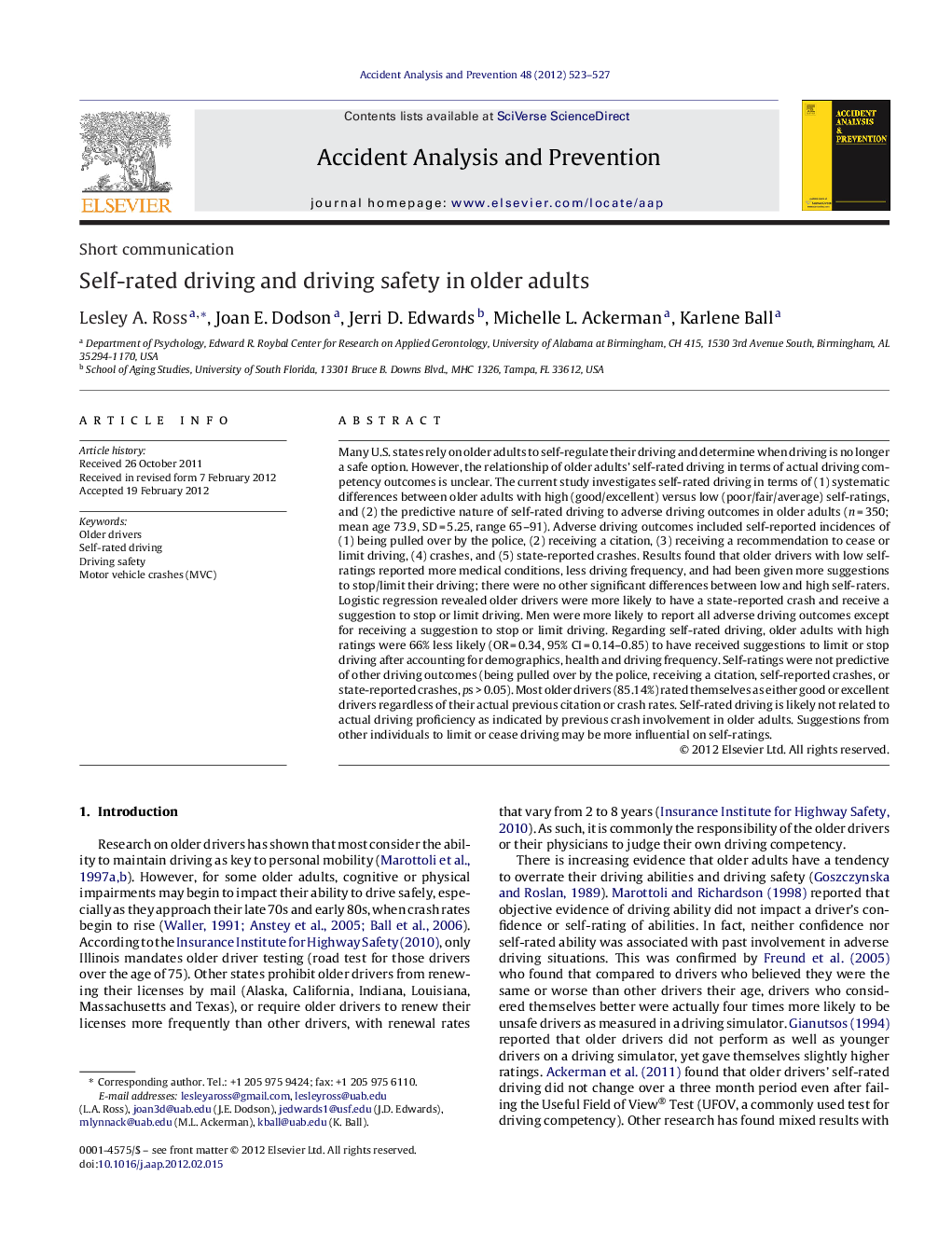| کد مقاله | کد نشریه | سال انتشار | مقاله انگلیسی | نسخه تمام متن |
|---|---|---|---|---|
| 572624 | 1452949 | 2012 | 5 صفحه PDF | دانلود رایگان |

Many U.S. states rely on older adults to self-regulate their driving and determine when driving is no longer a safe option. However, the relationship of older adults’ self-rated driving in terms of actual driving competency outcomes is unclear. The current study investigates self-rated driving in terms of (1) systematic differences between older adults with high (good/excellent) versus low (poor/fair/average) self-ratings, and (2) the predictive nature of self-rated driving to adverse driving outcomes in older adults (n = 350; mean age 73.9, SD = 5.25, range 65–91). Adverse driving outcomes included self-reported incidences of (1) being pulled over by the police, (2) receiving a citation, (3) receiving a recommendation to cease or limit driving, (4) crashes, and (5) state-reported crashes. Results found that older drivers with low self-ratings reported more medical conditions, less driving frequency, and had been given more suggestions to stop/limit their driving; there were no other significant differences between low and high self-raters. Logistic regression revealed older drivers were more likely to have a state-reported crash and receive a suggestion to stop or limit driving. Men were more likely to report all adverse driving outcomes except for receiving a suggestion to stop or limit driving. Regarding self-rated driving, older adults with high ratings were 66% less likely (OR = 0.34, 95% CI = 0.14–0.85) to have received suggestions to limit or stop driving after accounting for demographics, health and driving frequency. Self-ratings were not predictive of other driving outcomes (being pulled over by the police, receiving a citation, self-reported crashes, or state-reported crashes, ps > 0.05). Most older drivers (85.14%) rated themselves as either good or excellent drivers regardless of their actual previous citation or crash rates. Self-rated driving is likely not related to actual driving proficiency as indicated by previous crash involvement in older adults. Suggestions from other individuals to limit or cease driving may be more influential on self-ratings.
► The majority of older drivers (85.14%) rate their driving ability as good/excellent.
► Older drivers were more likely to crash or receive a suggestion to stop/limit driving.
► Men had more poor driving safety outcomes, yet fewer suggestions to stop/limit driving.
► Self-rated driving is not predictive of driving safety.
Journal: Accident Analysis & Prevention - Volume 48, September 2012, Pages 523–527